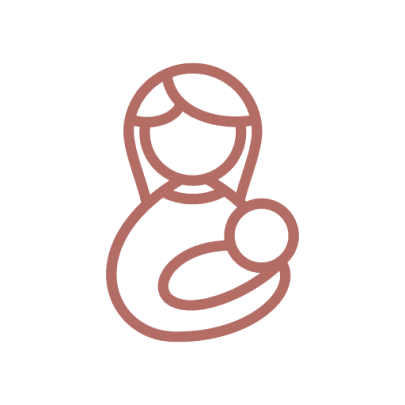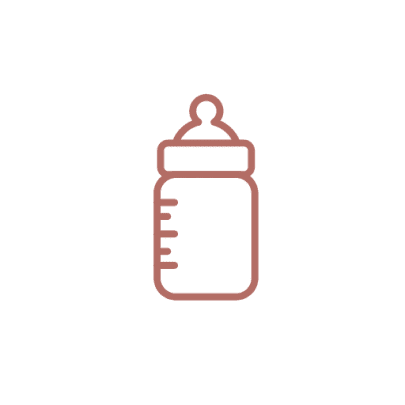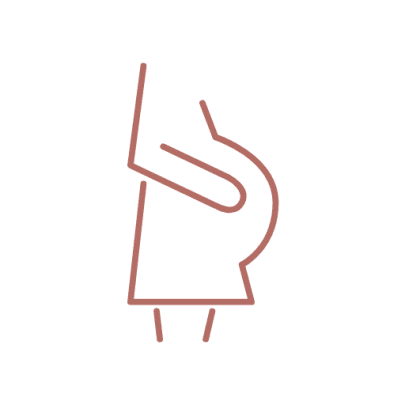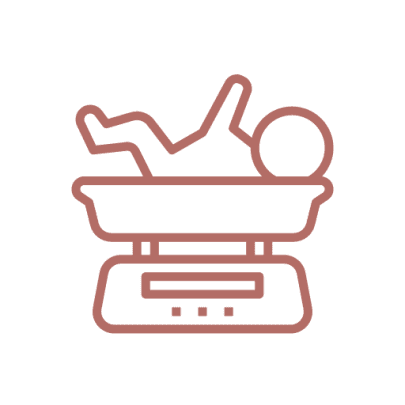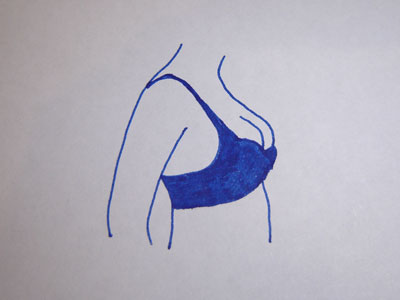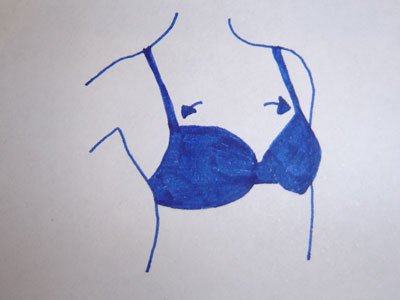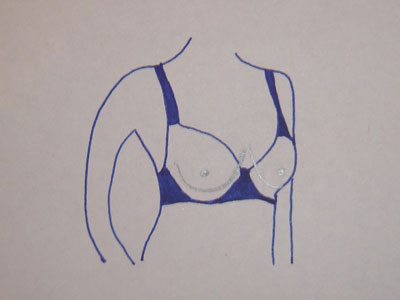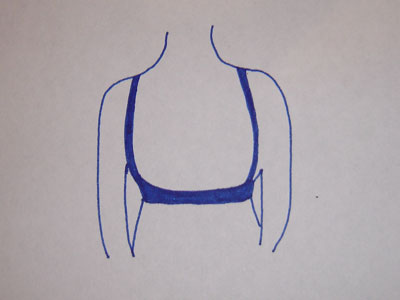To measure yourself, please first use our online bra size calculator.
When to Fit for a Maternity Bra
When you first notice an increase in the size of your bust which is generally around 3-4 months.
Depending on the development of your bust size you should measure again at approximately 7 months, however if you feel your bra is restrictive in any way, then you need to check your size.
When making your purchase it is important to look for a maternity bra that provides excellent support and flexibility to allow for breast size fluctuation. An easy way to check this is to slide your hand into the upper cup section to assess if there is enough room for expansion.
With our following diagrams, we will take you through some common fitting problems.
Problem: The back band keeps riding up, and doesn’t sit flush against your body.
Cause: The band is too big. (This is the 8, 10, 12, 14, 16, 18, 20 body size measurement).
Solution: Try a smaller size body band.

Problem: The shoulder straps dig into your shoulders, and leave indents on your shoulders.
Cause: The weight of your breasts is being incorrectly carried by the bra straps. The majority of the breast weight should be carried by the body band. If the straps are digging in, it means the band is not carrying much weight. The band size is too large.
Solution: Try a smaller size body band.
Problem: Your breasts seem to heave and bulge out the top of the cups.
Cause: the cup size you are wearing is too small.
Solution: try a larger cup size.
Problem: There are creases and gaps in the cup, it is bunched up.
Cause: The cup size is too large.
Solution: Try a smaller cup size.
Problem: The cup fits fine around breasts, but seems to have a big gap between the top of the cups and where the shoulder straps join in.
Cause: This may be due to the style of the cup finishing too high on your chest. Perhaps because the bra you are wearing is a full cup design.
Solution: Try a different cut cup – such as a 3/4 cup design.
Problem: The bottom of the bra cups sit well below the bottom of my breasts.
Cause: If the bottom of the bra is being pulled down below your breast tissue, it means the body band is too small for you.
Solution: Try a larger body band size.
Problem: The back straps are stretched far apart, and don’t seem to sit in a parallel straight line.
Cause: The back straps are being pulled too far apart because the body band is too small for your size and is over stretching.
Solution: try a larger band size.
Bra Cup Styles: Small breasted woman suit a padded, 3/4 cup or a plunge style whereas a fuller breasted woman would suit a balcony, full cup or a molded foam cup.
And one more point to note: In bra fitting, the numbers (8, 10, 12, 14, 16, 18, 20) refer to your body size and will usually be the same as the normal clothing size that you wear. The letters (A, B, C, D, DD, E, F, FF, G) refer to your breast size. A lot of people think that a 12D and a 16D will have the same size cup and just a different body size band. It is important to note that as the Body Band size increases, the cup size decreases in proportion.
So if you need to go up a Body Band Size, then you need to go down a cup size in order for the cup to have the same fit.
For example, a lady finds that a bra size 12E the band is too tight. Solution: she needs to try a 14 Body Band size. In order to have the same size cup, she will need to drop a cup size to a D. She will need to try a 14D.
Another lady finds that a size 16E is too large and she wants a smaller Band Size. She drops a Body Band size down to 14, and increases cup size to F. She will need to try a 14F.

